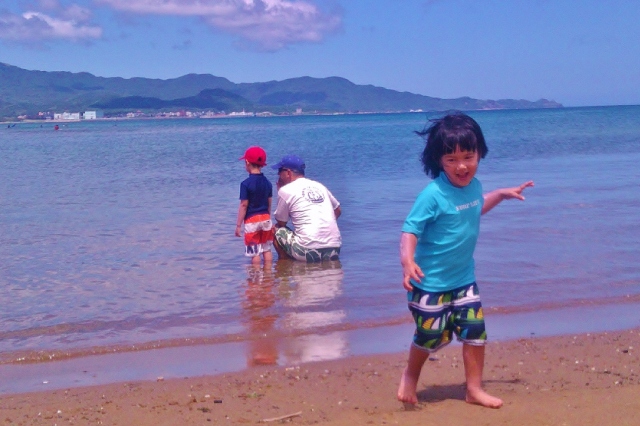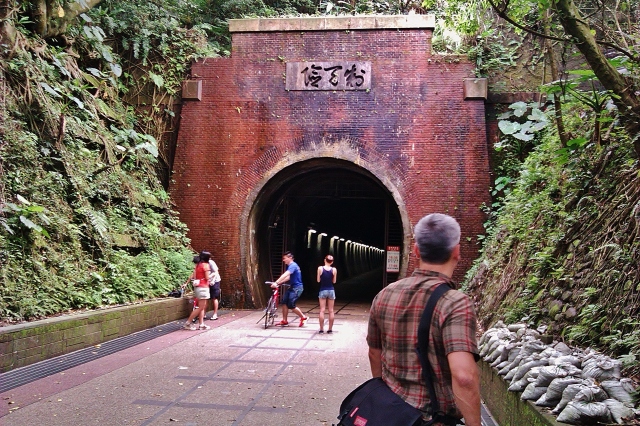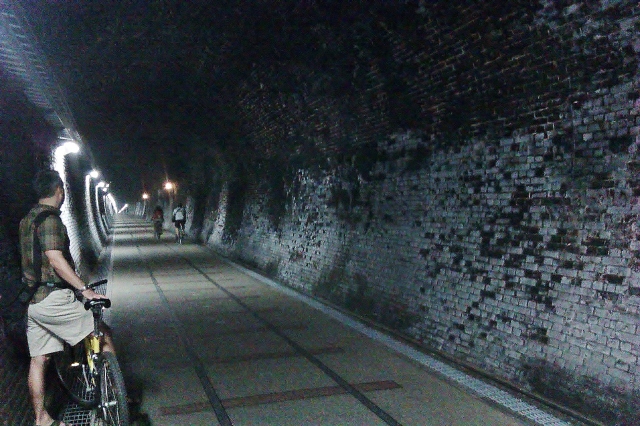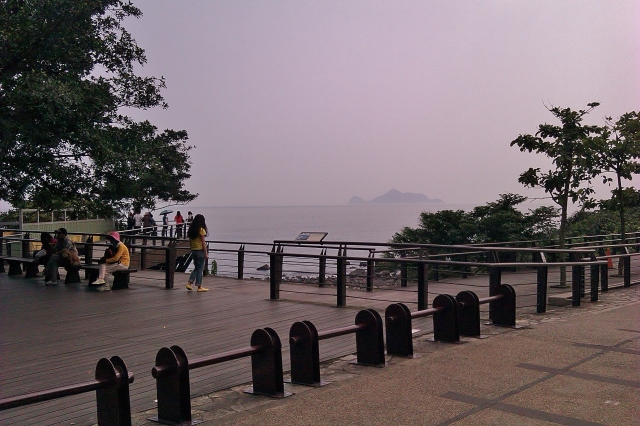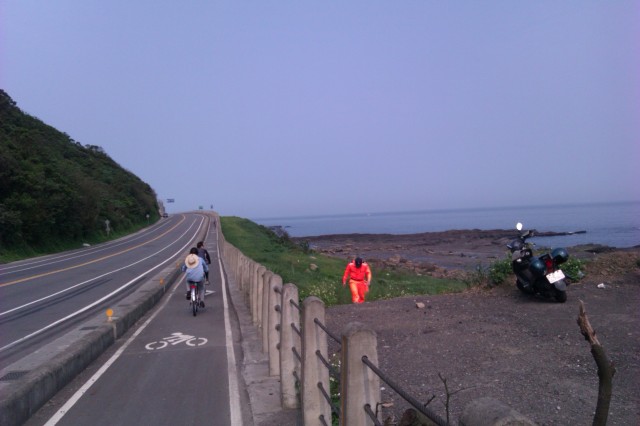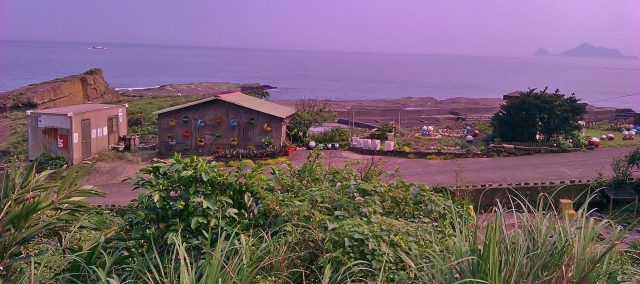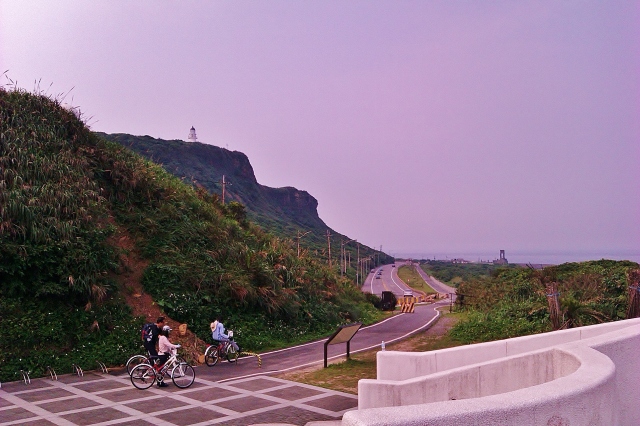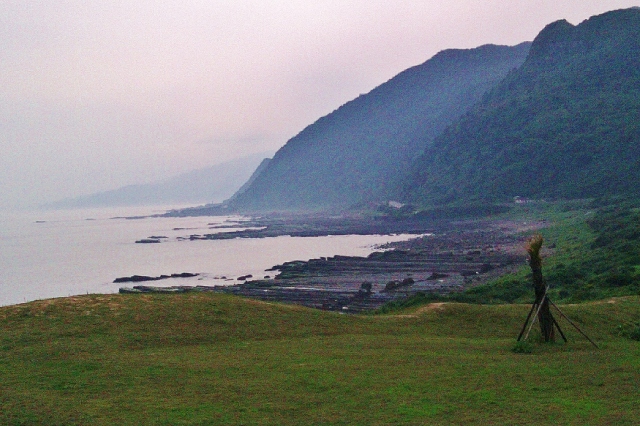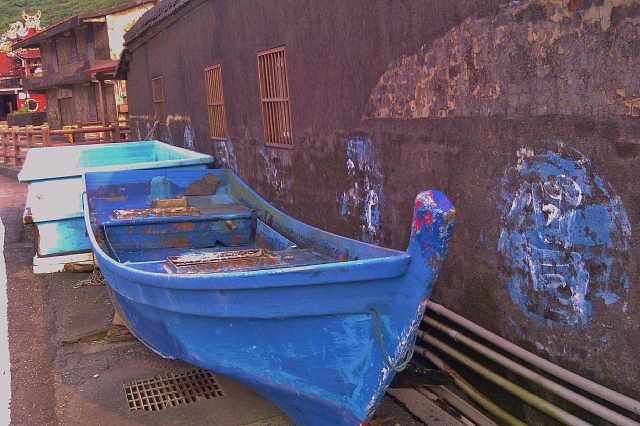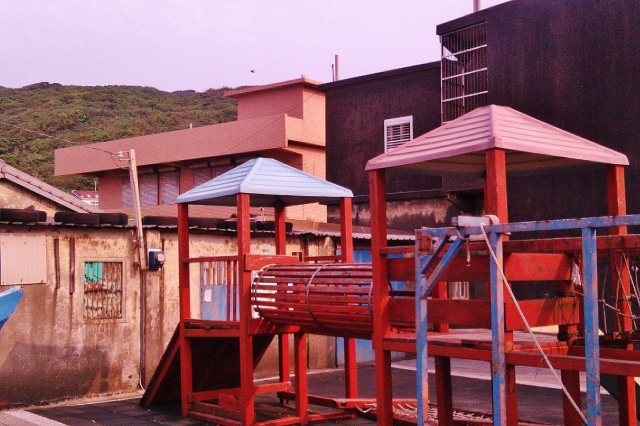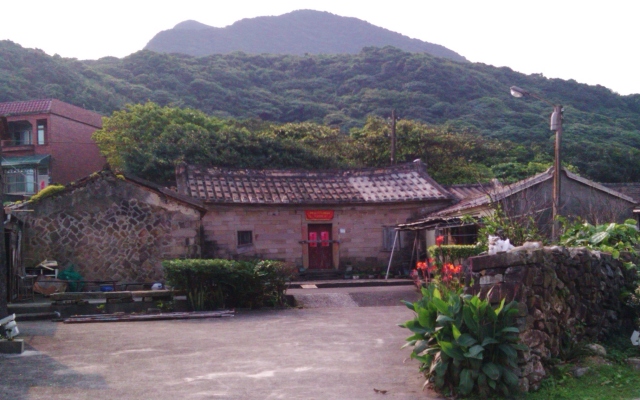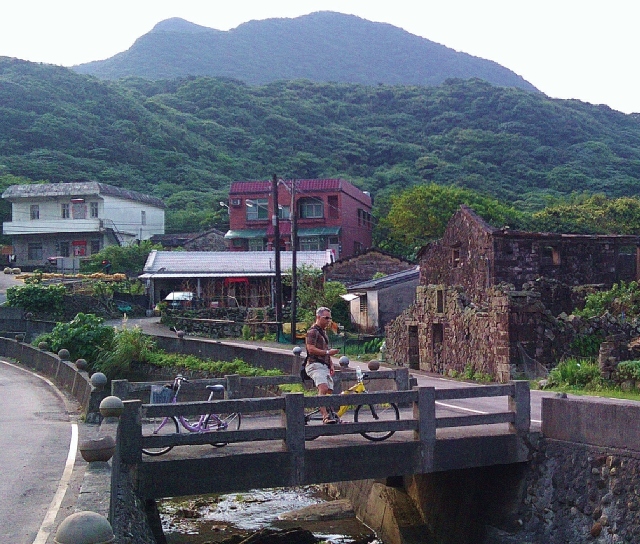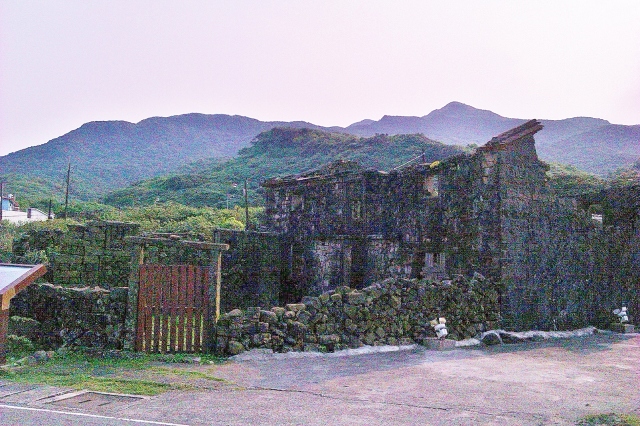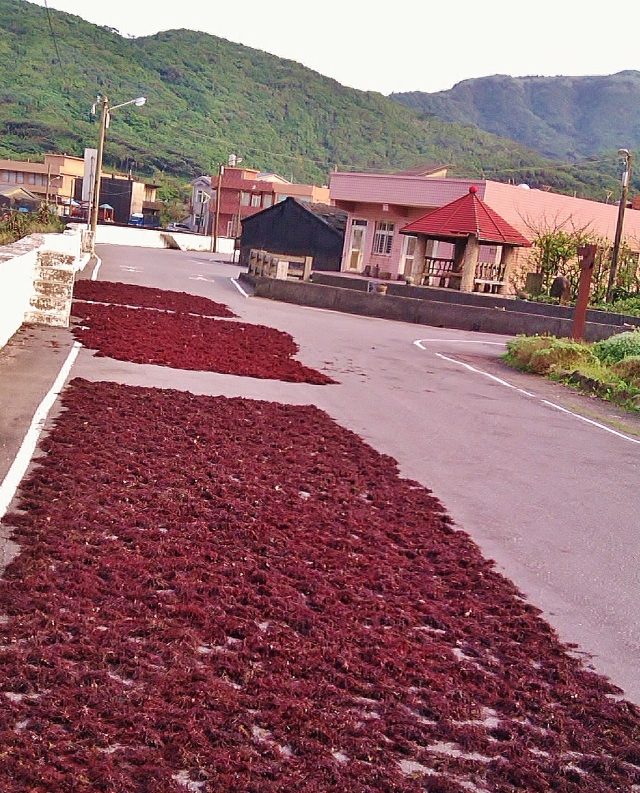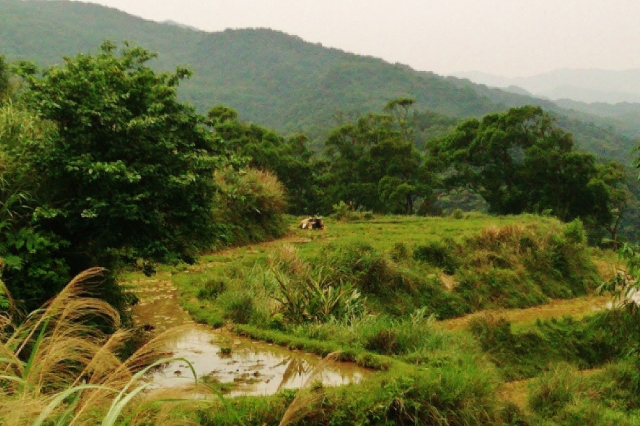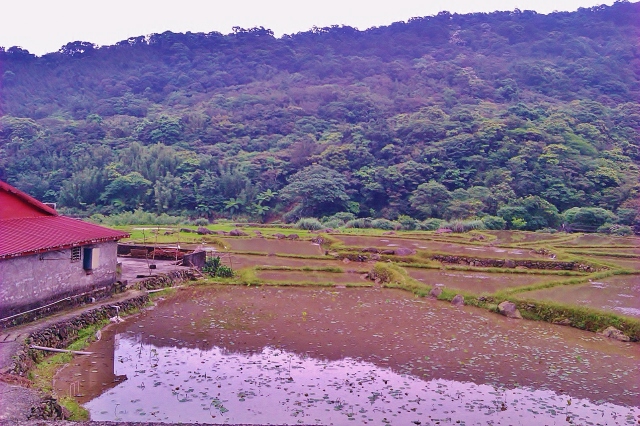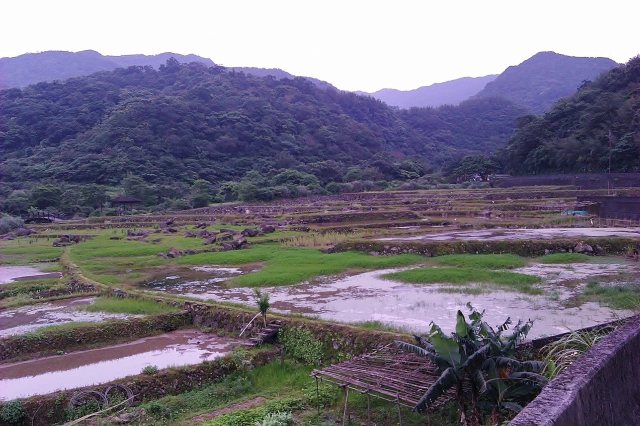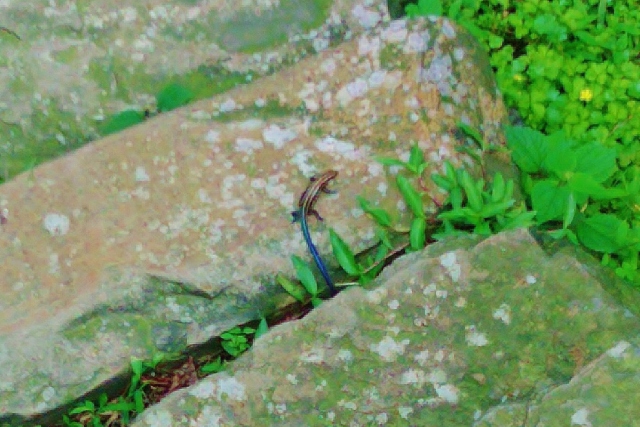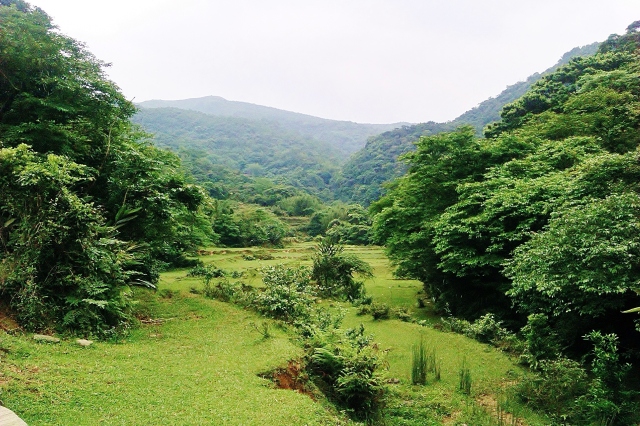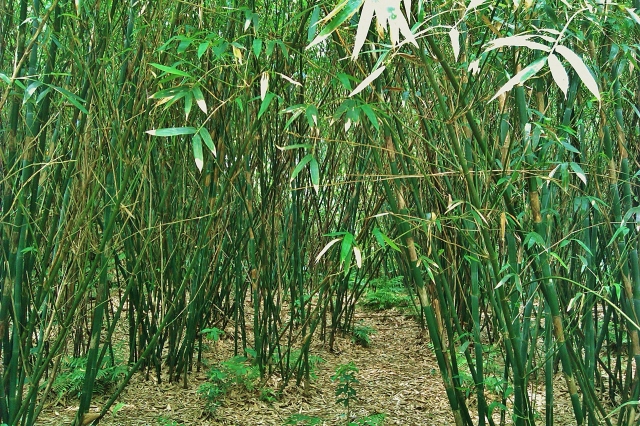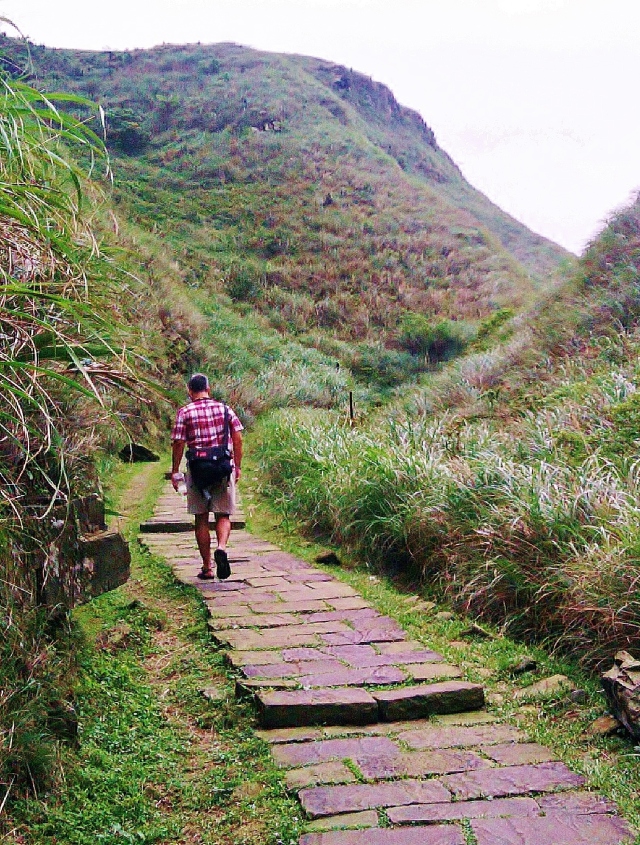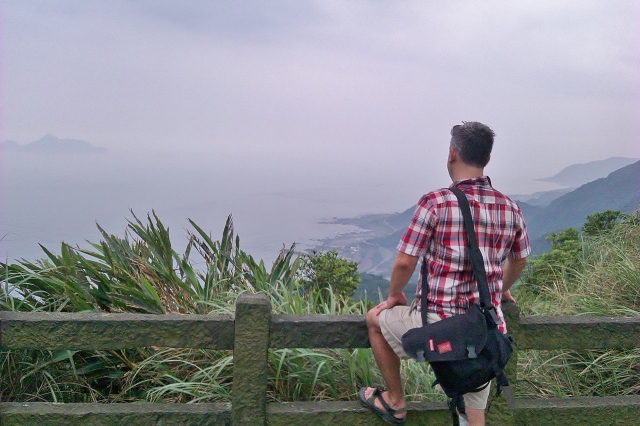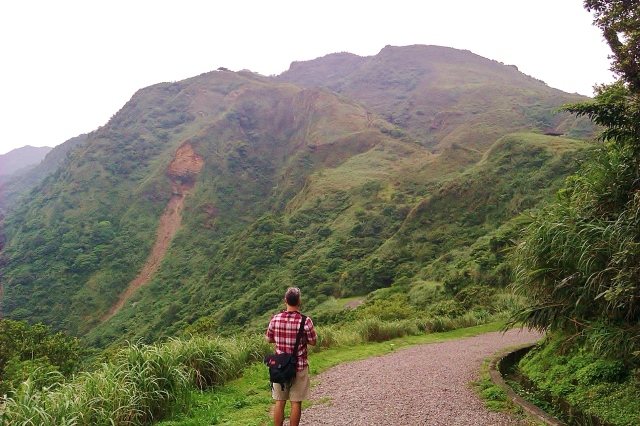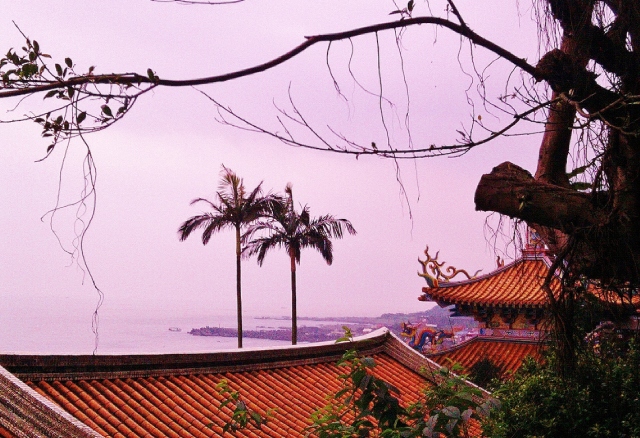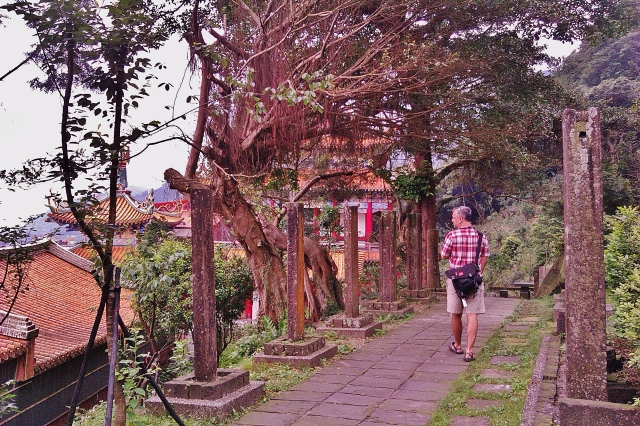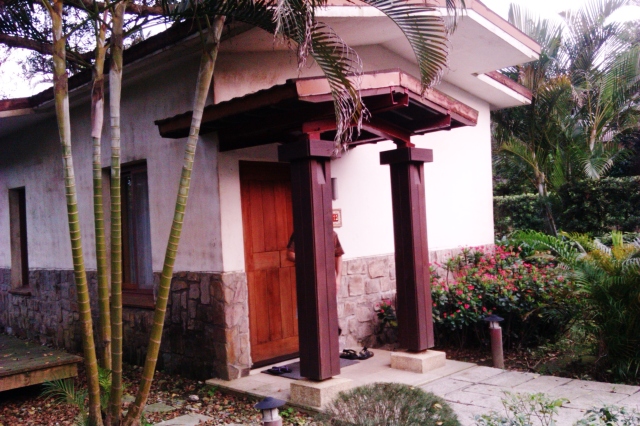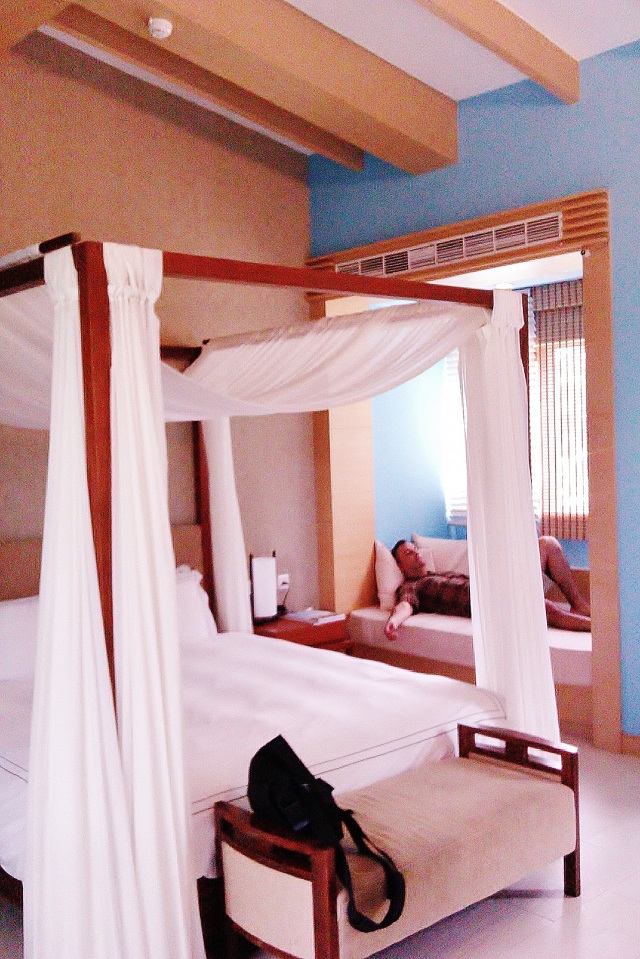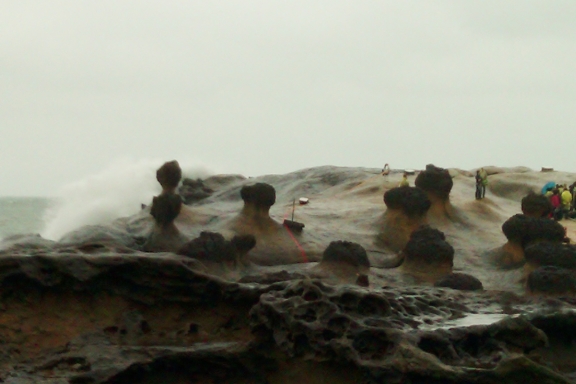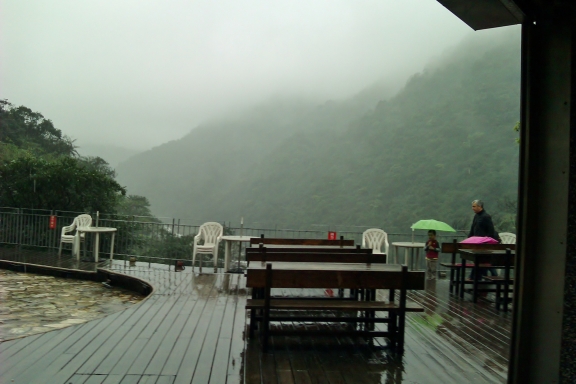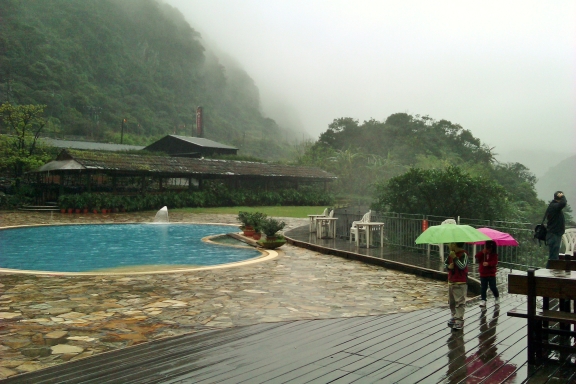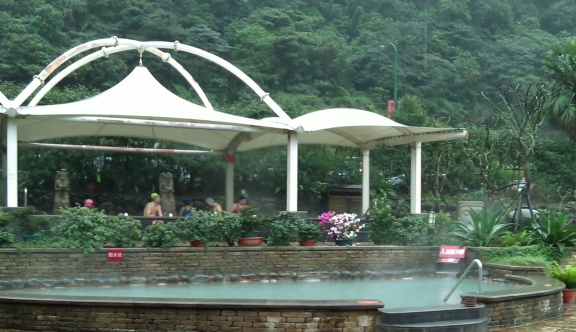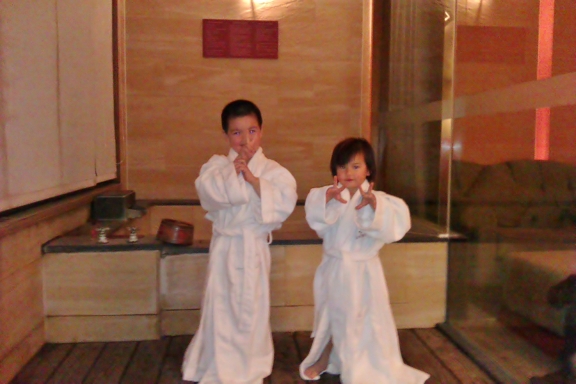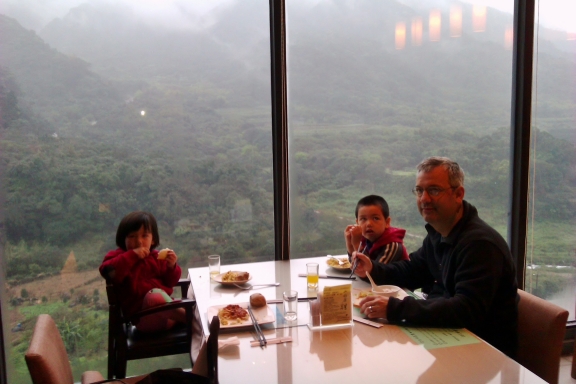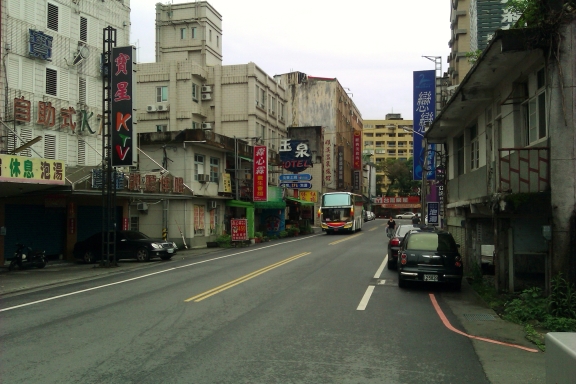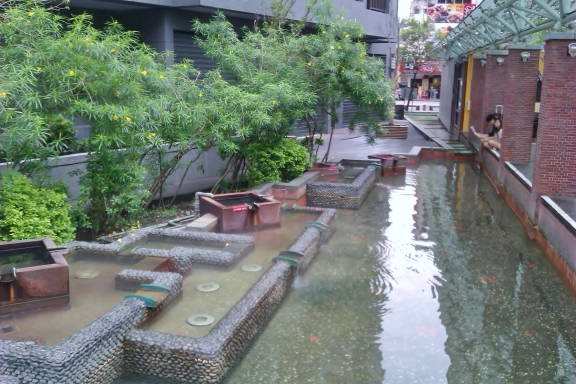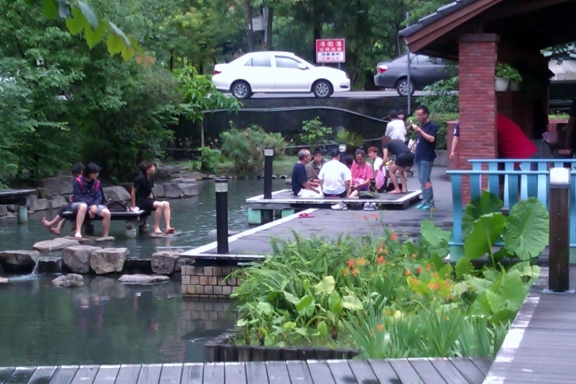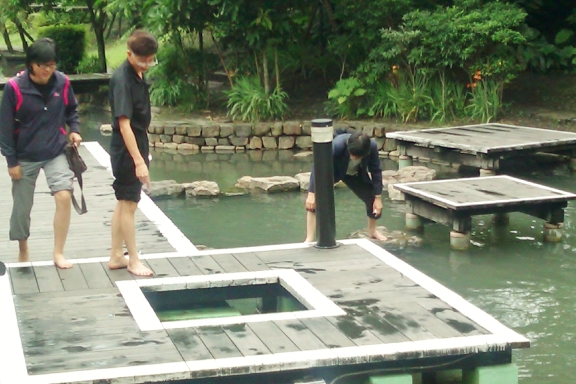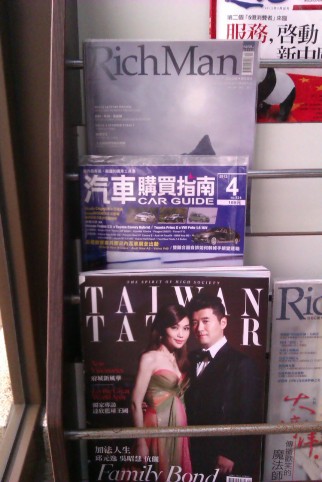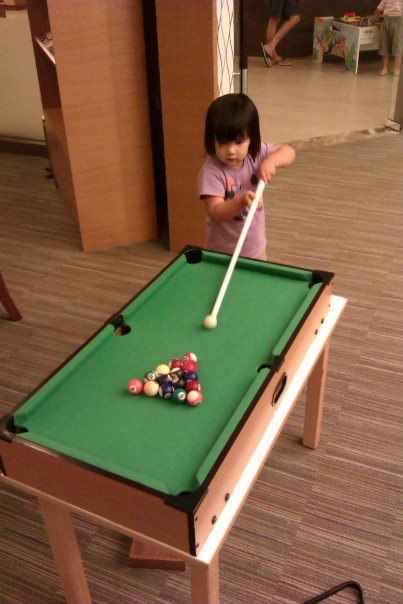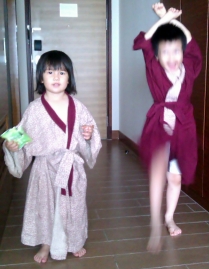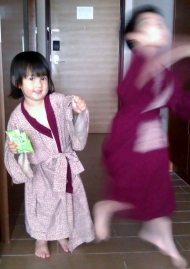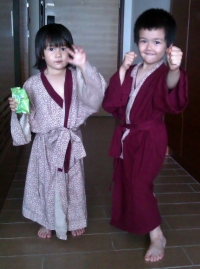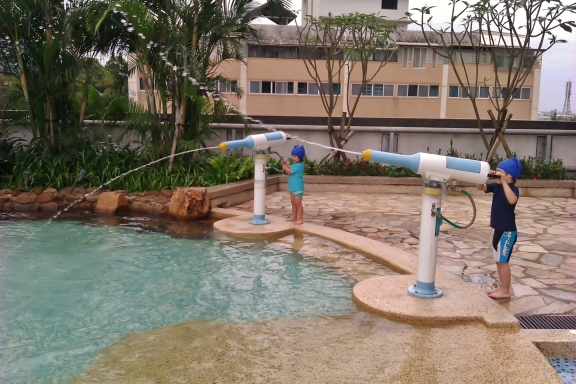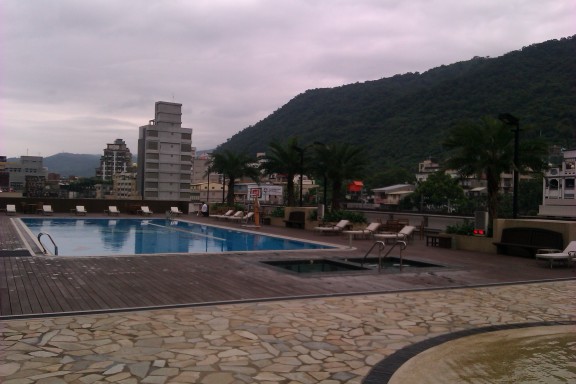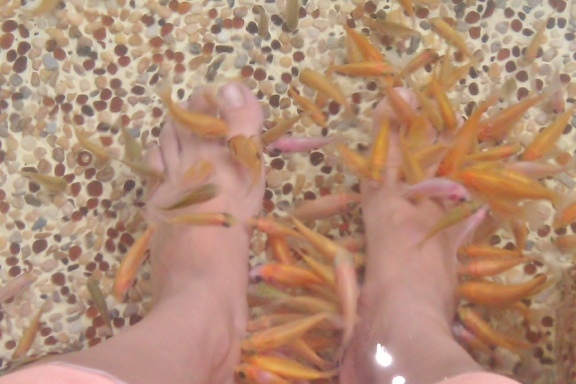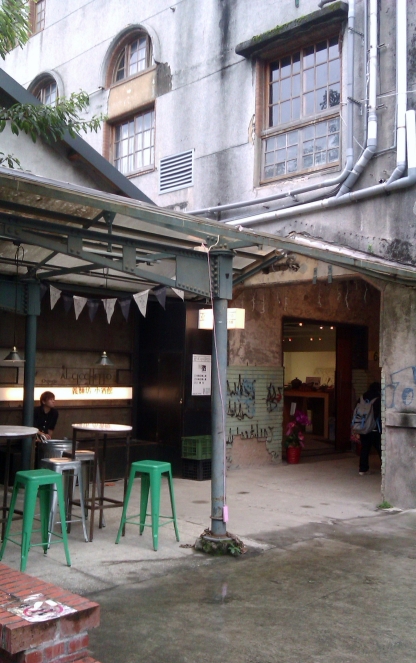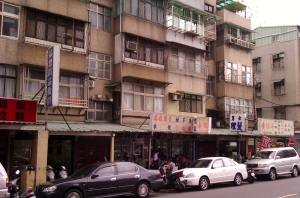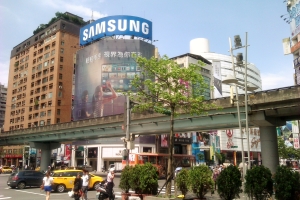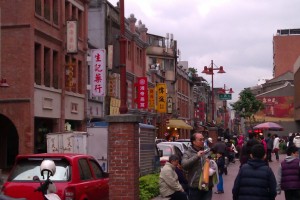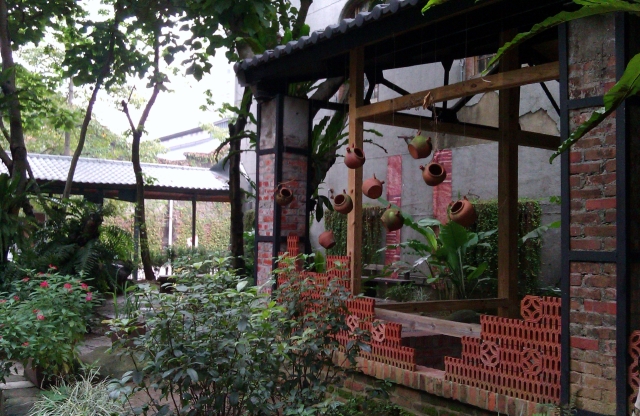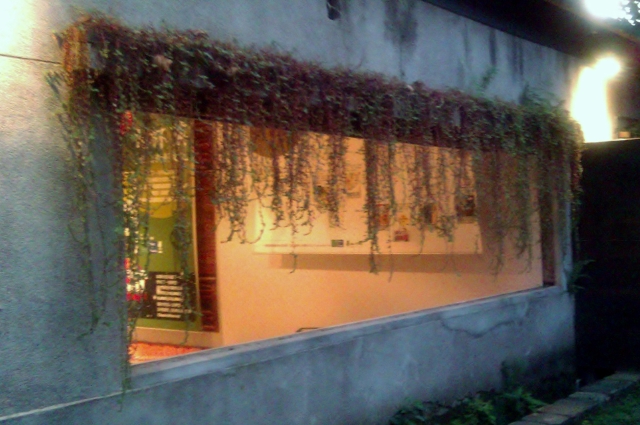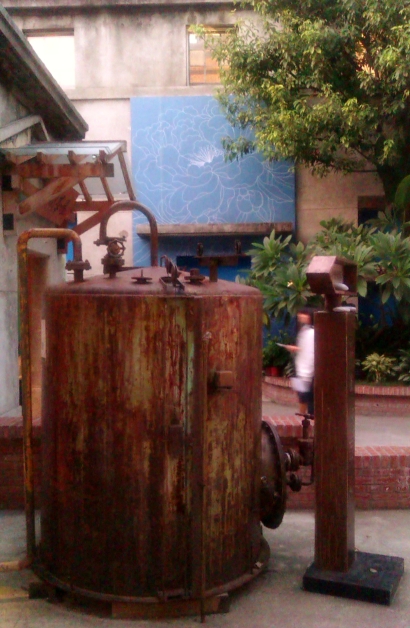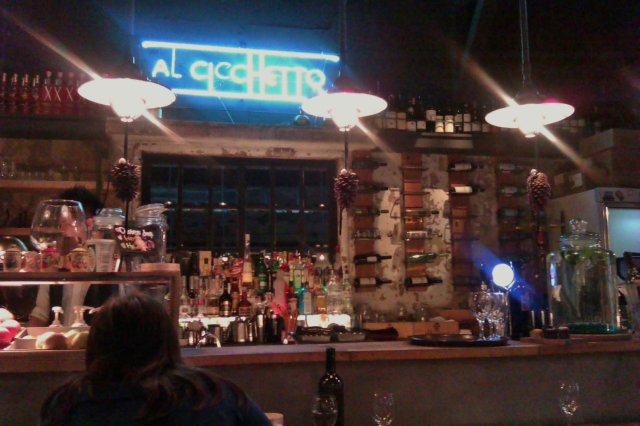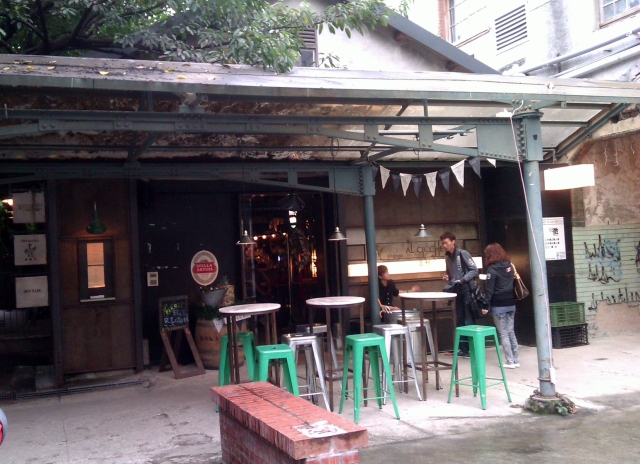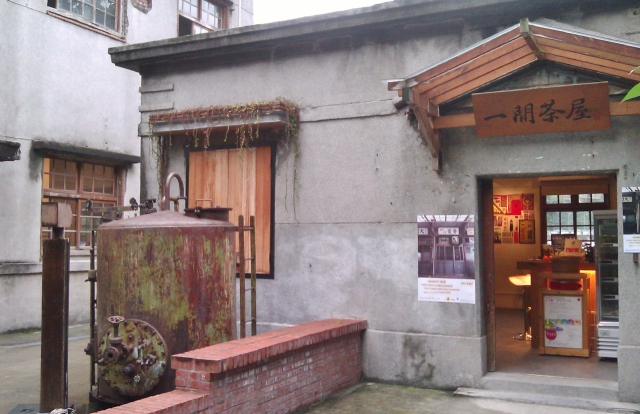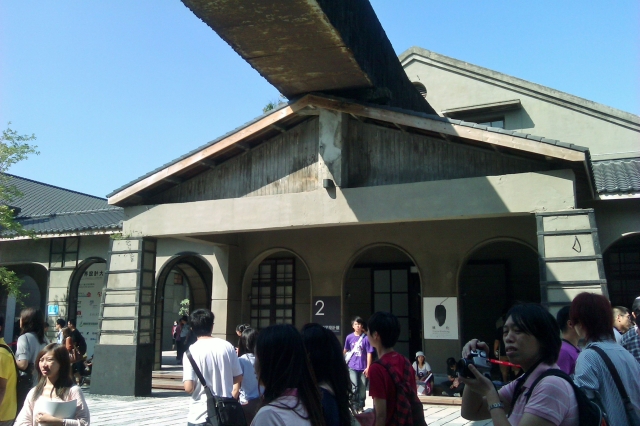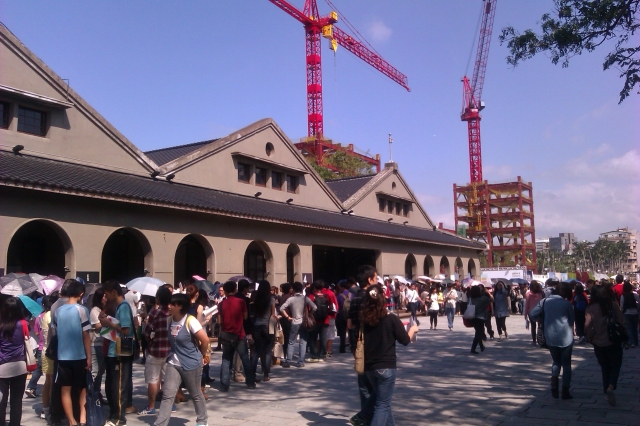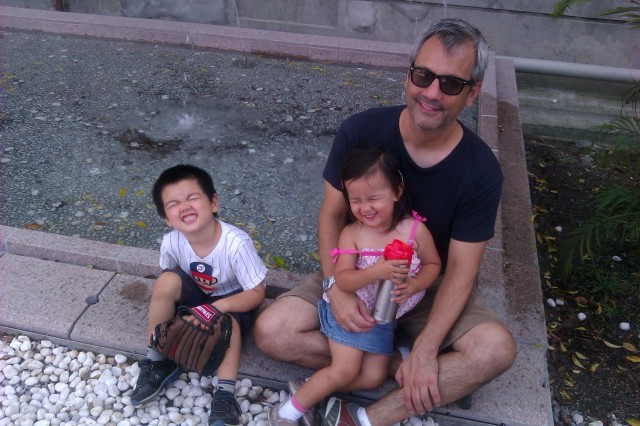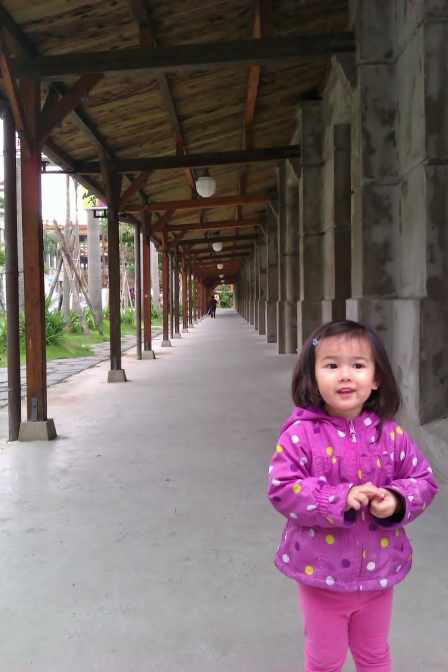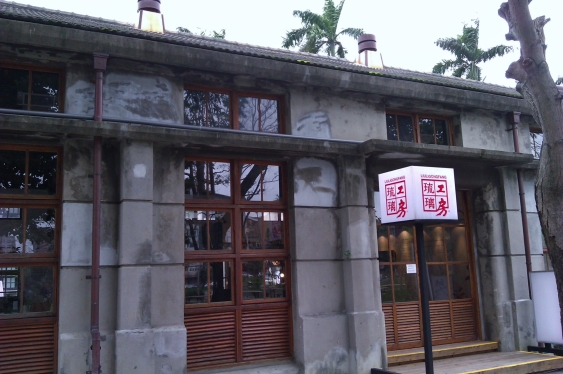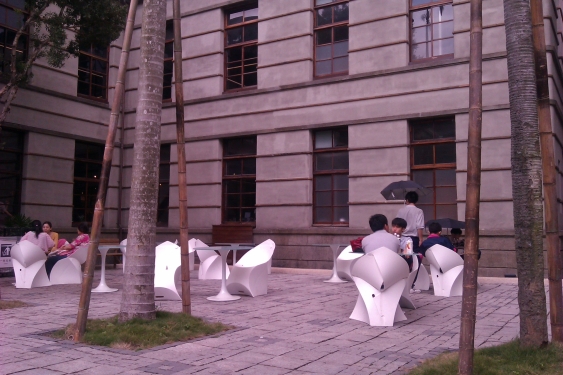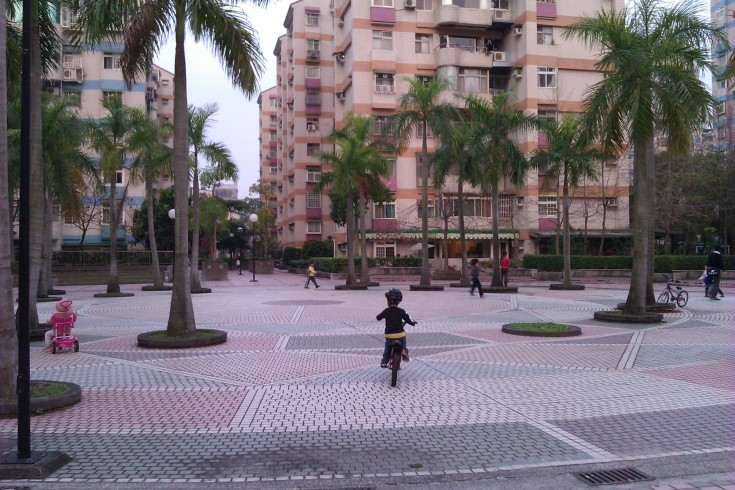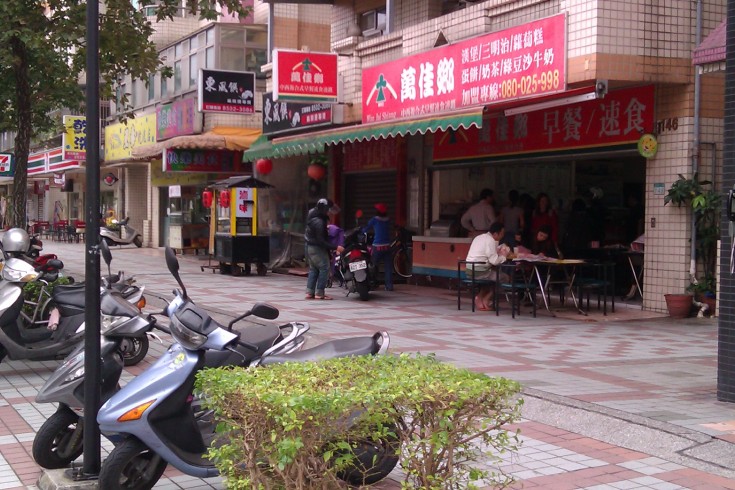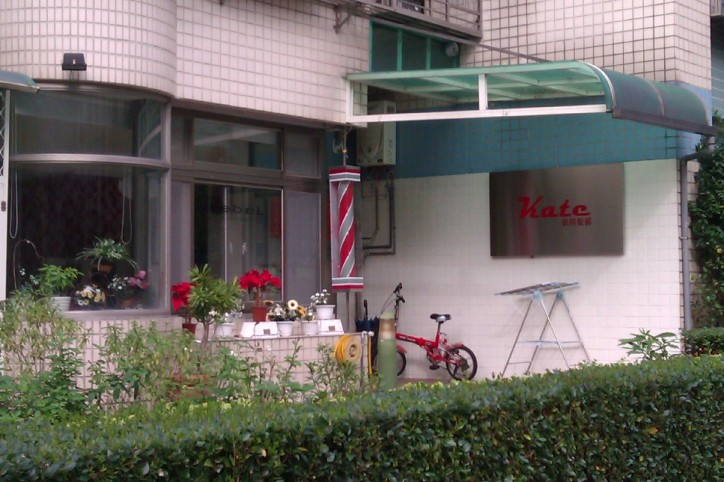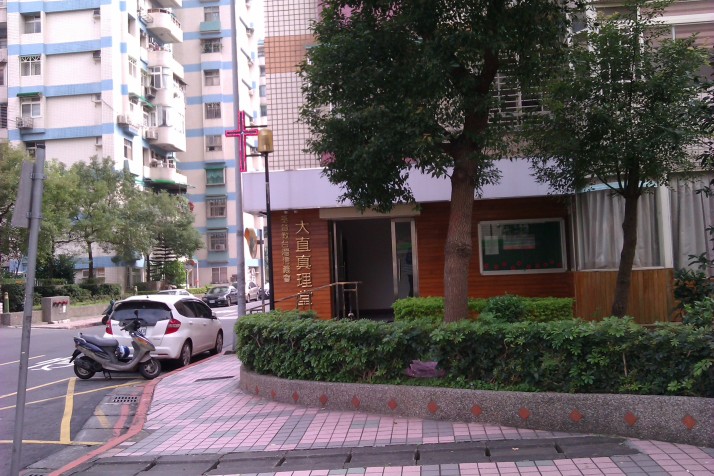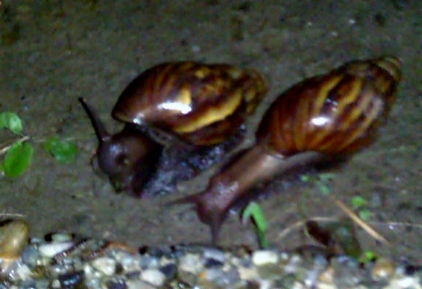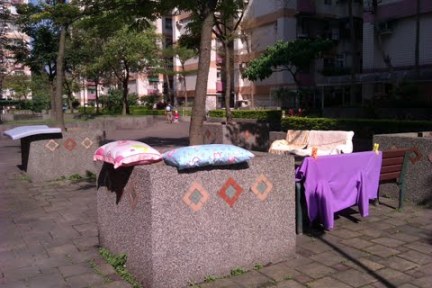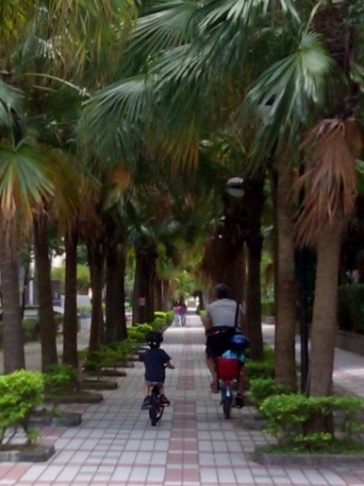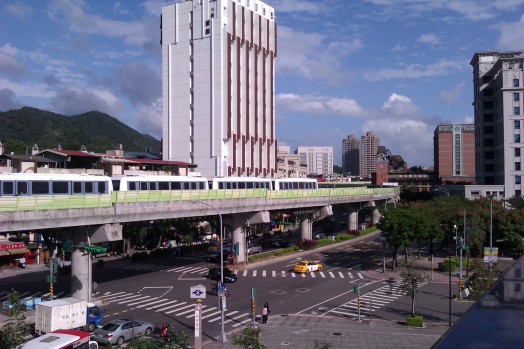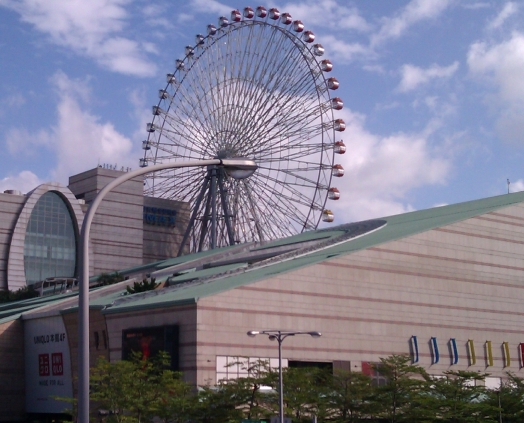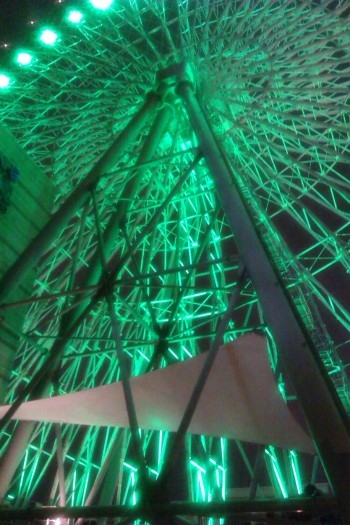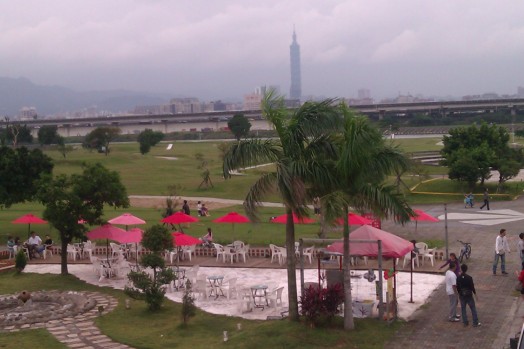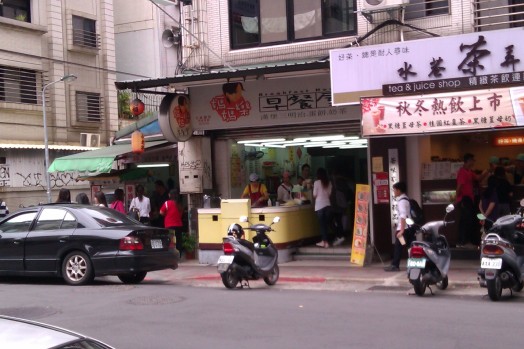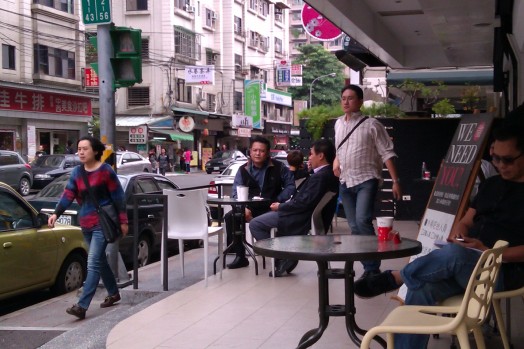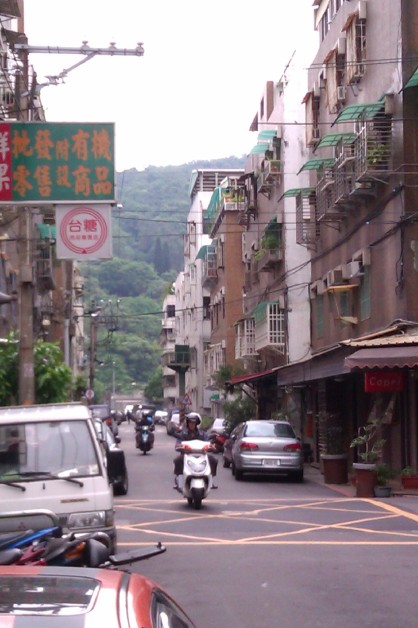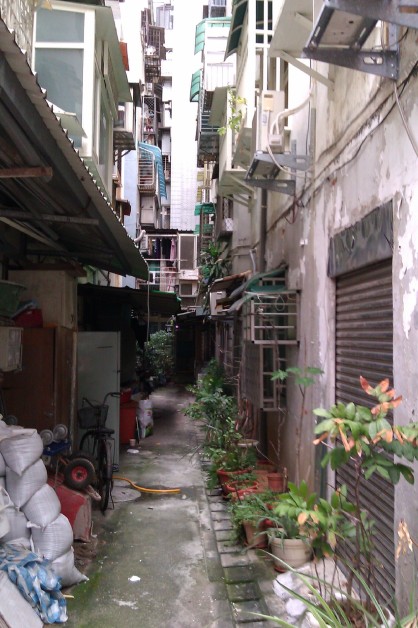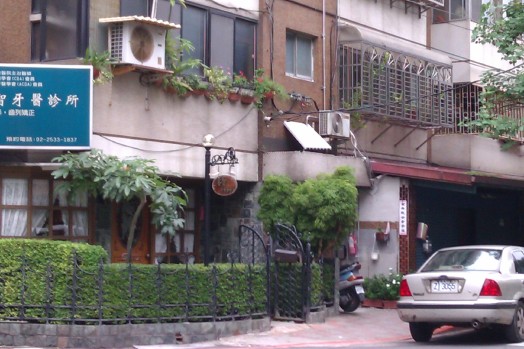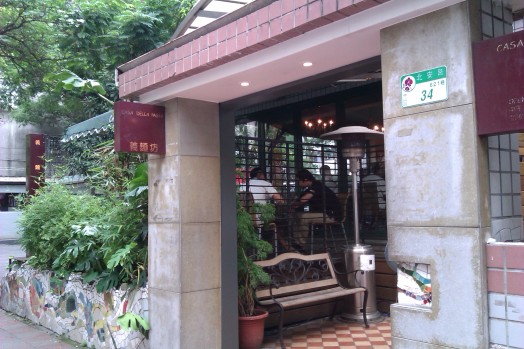So. It’s been almost a year since my last post. And we’ve only got a little under three months left here before we go back to the U.S. But I’ve finally been inspired to post again.
A couple of weeks ago, while my parents were visiting from the U.S., Serge and I took our first-ever vacation without the kids since Mateo was born. We didn’t go far, just to the town of Fulong (福隆), about an hour and a half by train from Taipei, on the northeast coast of Taiwan. We’d been to Fulong a bunch of times before on day trips to the beach:
But I’d been reading about the bike paths around there and really wanted to check out one in partciular, without kids in tow. This path started with a 2km ride through the Old Coaling Tunnel (舊草嶺隧道), which was the longest railway tunnel in use during the Japanese era. (It’s also the subject of an old Taiwanese song I grew up hearing, 丟丟銅仔). The tunnel first opened in 1924, closed in 1979, and opened again as a bikeway in 2007. As I’ve mentioned before, I’ve been pleasantly surprised at the examples of preservation/redevelopment of industrial structures here, and this one also did not disappoint.
Here’s where we entered:
Here’s the interior:
And here’s what we came out to on the other side (that’s Turtle Island (龜山島) barely visible in the distance):
From there we turned left and onto a cordoned-off bike lane following Hwy 2 along a rocky coast.
Occasionally we passed through a fishing/seaweed harvesting village, the most interesting of which was Mao’ao ( 卯澳).
A fishing boat:
Parts of fishing boats and other fishing gear used to make a playground structure:
Some old stone houses from back in the day:
And lots of seaweed (or red algae? some sort of sea plant) drying in the sun in the middle of the road:
The ride was fairly easy — mostly flat and mostly on either a cordoned-off bike lane or on nearly deserted roads. It was about a 20K loop back to Fulong town, and even with me being a slowpoke, it took us less than 2 hours. We were there on a weekday, and once we got through the Old Coaling Tunnel at the beginning, we only saw a handful of other riders. But I imagine it gets pretty crowded on weekends.
Anyway, it is beautiful and fun and easy to get to from Taipei, and I highly, highly recommend it. (Also, if you want a longer ride, you can continue up or down the coast instead of circling around back to Fulong.)
The next day, we decided to try the Caoling Historic Trail, which is the only remnant left of a trail that was built 130 years ago to connect Tamsui/Danshui (淡水) on the northwest coast to Yilan (宜蘭) on the northeast coast. This was definitely more grueling on a warm day than our bike ride the day before. From our hotel in Fulong through the mountains down to the town of Dali (大里)on the coast, it was about 10K, which took us about 3 hours. (You can cut down on the time required by about 40 minutes if you take a cab directly to the trailhead at Yuanwangkeng Riverside Park (遠望坑親水公園) instead of walking there from Fulong.)
The walk to the trailhead was mostly pretty boring, but we did get up to some hillside rice paddies:
(There is actually a water buffalo in the center of this photo, but my phone camera sucks so you can’t make it out. There was also one of those white birds — egret maybe? — sitting near it. We waited around hoping that the bird would hop onto the buffalo — something Serge has dreamed of seeing — but it did not cooperate.)
Yuanwangkeng Riverside Park (by the trailhead) was lovely:
The trail was steep in a lot of sections but largely paved, with a few rest points with bathrooms along the way. One rest point had several of these beautiful guys:
The trail went through lots of different kinds of terrain/foliage:
eventually reaching this high grassy area:
that opened out onto the coast (that’s Turtle Island again in the distance on the left):
Way up above behind us, we actually saw water buffalo grazing. Had not realized that water buffalo would/could hang out in that kind of terrain. Again, my phone camera was not up to the task of capturing that:
From there, we made the descent down to Dali on the coast, but you can also continue on through these highlands into the Taoyuan Valley.
Our trail ended at the Dali Temple:
From there we walked to the Dali train station to catch the train back to Fulong and then continued home to Taipei.
If you go:
From Taipei, you can take the train from Taipei Main Station, Songshan Station, or Nangang Station (see http://twtraffic.tra.gov.tw/twrail/English/e_index.aspx). Express trains (which get you there about 10 minutes faster) allow reserved seating; local trains do not. Trains get very crowded on weekends when the weather is good, so if you’re on a local, you might have to stand.
It’s easy to do a day trip from Taipei, but if you’re looking for a nice place to spend the night, we stayed at the Fullon Fulong Bellevue Resort, which is comprised of a bunch of detached and semi-detached villas set in gardens within walking distance of the beach. It was lovely and quiet. This was our villa:

